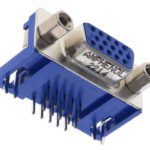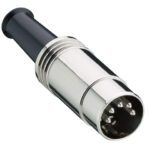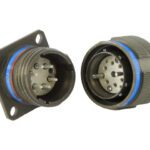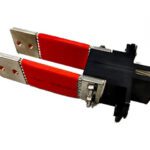What are MIL-DTL-32689 Connectors?
Meet the Connector: MIL-DTL-32689
MIL-DTL-32689 is a relatively new MIL-spec defines high-density, lightweight circular connectors that are well-suited for military and aerospace applications because of their quick disconnection, tri-start threaded coupling, and environment-resistant features.
MIL-DTL-32689 provides multi-sourcing for Mini/Micro-D38999 Series III connectors, miniature versions of MIL-DTL-38999. At about 70% lighter and typically 50% smaller than D38999 connectors with similar contact layouts, these new smaller versions are in high demand as a SWaP-optimized solution for military and aerospace applications. The specification covers the general requirements for EMI and RFI shielded connectors.
MIL-DTL-32689 was first released in November 2021. With the latest version, Amendment 2, released January 24, 2023, connector suppliers are just beginning to test the waters of this specification. Some examples, such as the 2M Series from Amphenol, Souriau micro38999 Series (Eaton), and MKJ Series from ITT Cannon are in production.
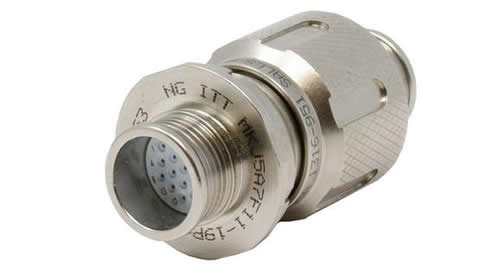
ITT Cannon’s MKJ5 features threaded coupling with high density size 23 machined contacts for crimp and PCB. The MKJ Series offers proven, reliable, and cost-effective interconnect solutions for critical communication, navigation, and high-speed data transmission—at half the size and weight of traditional ones.
Glenair, maker of the highly popular Series 80 Mighty Mouse connector (a micro-miniature circular connector that replaces the larger D38999) joined the project committee in late 2021.
This connector supports applications with contacts at sea level, DWV tested up to 1800 Vac (rms). It can operate within a temperature range of -65 °C to +200 °C, depending on class, and can withstand up to 500 hours of salt spray. Designed for military and aerospace as a miniature, high density, threaded connector, it is resistant to environmental conditions, high shock, high vibration, and corrosion. Some classes of this connector family are suitable for severe wind and moisture problem (SWAMP) areas.
Design Notes for MIL-DTL-32689
Coupling. According to the specification, connectors use a triple-start threaded coupling system to achieve full mating with one 360° turn.
Plugs and receptacles. A ratcheting, anti-decoupling mechanism keeps plug connectors secure. Both plugs and receptacles have keyed shells and removable rear-release crimp contact.
Shell styles. Shells have integrated banding platforms or rear accessory threads.
Contact mating. End sizes include 23, 20, 20HD, 16, and 12.
Finishes and Colors. Nonreflective finishes and colors may vary in color depending on the method of manufacture. This variance in color does not alter the performance capabilities of the finish. Class T is required to be nonreflective. Class W is required to be an olive drab color in accordance with SAE AMS-QQ-P-416. Class Z is required to be black in accordance with ASTM B841.
Additional recommendations and restrictions:
- Contacts, most notably contact size 23, are vulnerable to pin contact bending from scooping. Load pins in the receptacle for scoop-proof sensitive applications using connectors with a size 23 pin contact.
- Minimize required cable bending by locating receptacles appropriately. Permanently establish the right-angle bend when using size 16 and 12 contacts with large cables bent at right angles. Utilize an angled backshell or other acceptable wire strain relief based on the end application.
- Heavy jacketed cable and excessive overhang moments can cause possible shell damage.
- Tears could degrade some sealing properties against the jacketed wire; take care when using a metal insertion/extraction contact tool to prevent tearing the internal sealing surfaces. The connector rear sealing grommet has a high-density contact population and, therefore, has thinner walls. The rear sealing hole can be elongated when wires are being bent or bundled. This may allow fluids into the grommet seal. Wire bundle ties should be more than two inches from the rear of the connector, minus any backshell.
- Parts with cadmium plating should not be packed in non-ventilated containers or in direct contact with wood or cardboard, especially under conditions of high humidity or moisture, due to a corrosive reaction that often occurs between the cadmium plating and organic acids (i.e. formic acid, butyric acid, etc.) which form under these conditions.
Markets/Applications:
These connectors are used in military and aerospace applications where MIL-DTL-38999 connectors are too large.
Suppliers:
Amphenol Communication Systems, ITT Cannon, and TE Connectivity, Fischer Connectors, Omnetics Connector Corporation, and Eaton (Souriau).
Related products:
Like this article? Check out our other Meet the Connector and Networking articles, our Datacom/Telecom Market Page, and our 2023 and 2022 Article Archive.
Subscribe to our weekly e-newsletters, follow us on LinkedIn, Twitter, and Facebook, and check out our eBook archives for more applicable, expert-informed connectivity content.
- Sealing Success: Overmolding for More Secure Connections - April 23, 2024
- Medical Cable Assemblies Product Roundup - April 23, 2024
- Mezzanine Connectors Product Roundup - April 16, 2024
